The current range of easy-to-program boards are staggeringly large for the complexity of the designs. As technology continues to advance and new opportunities for sensors and applications arise, why should people be limited to a bulky device? Technology should be able to shrink to meet any opportunity for any use, and that is what the µduino was designed for!
The µduino is the smallest Arduino available, measuring in at 12 mm (0.5 inches) x 12 mm. While similarly sized micro-controller boards do exist, their power is severely limited to using chips such as the Attiny85 (with up to 6 I/O ports). The µduino makes use of the power of the ATMEGA32U4 chip found in the Arduino Leonardo (a board over 20 times larger), offering 20 I/O ports, including PWM and ADC ports! In addition, the µduino can be powered by batteries or directly by micro-USB. The µduino can also operate in one of two power modes, 3.3 V or 5 V, which can be selected using a jumper on the board. This way, you can tailor your µduino to match your sensors and power supplies.
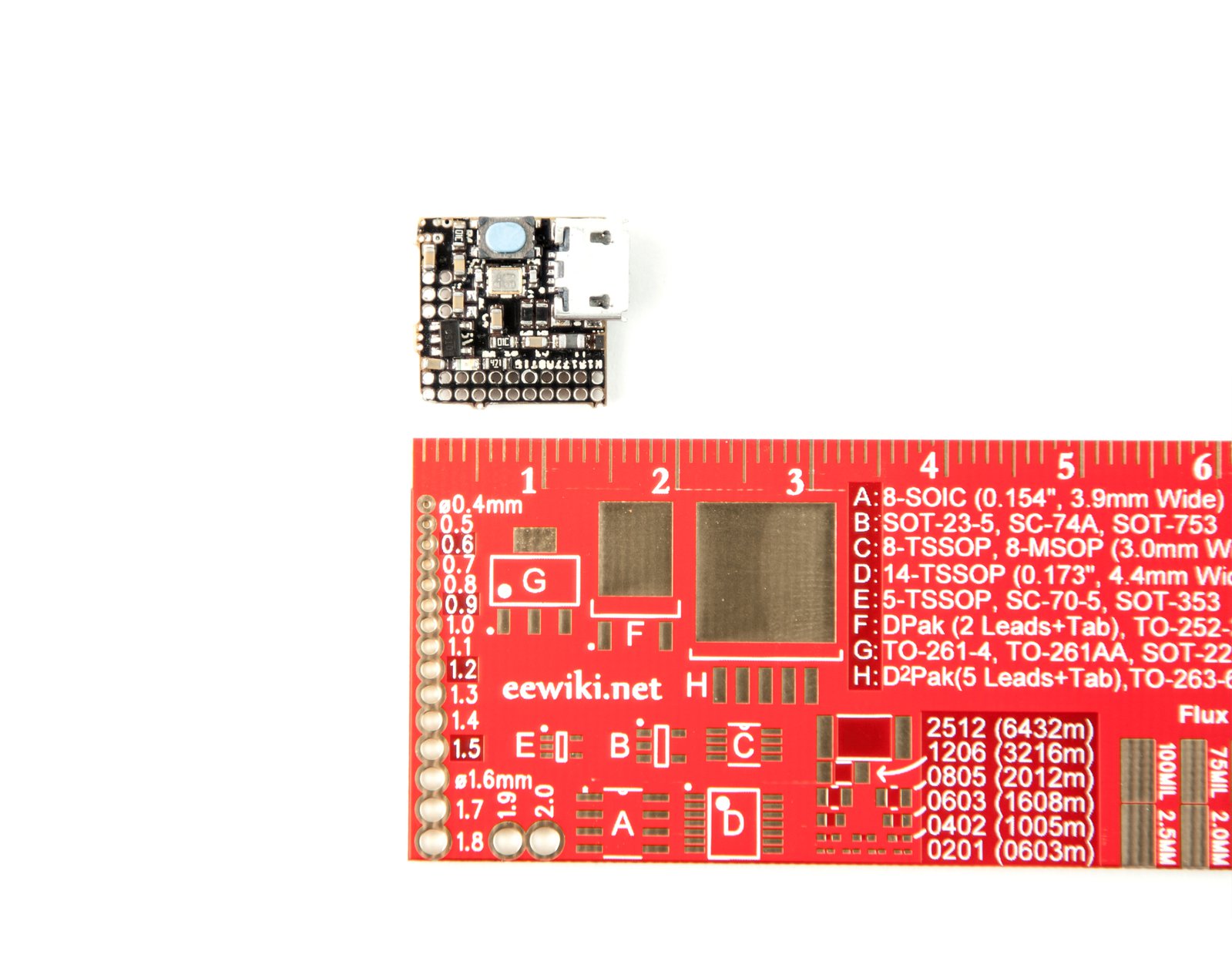
The µduino is extremely small, but that size opens up immense possibility for projects by supplying the raw power of a full sized Arduino board in the smallest size imaginable. Unlike many other Arduino-based boards, the µduino uses smaller hole separation (1.27 mm vs 2.54 mm). While vastly cutting down on size, standard sized wires are still compatible and can be soldered fairly easily.
The µduino is designed particularly with wearables and small-sized projects in mind. With this focus, the µduino works very well with sensors. Some uses include a mini quad-copter, GPS logging module, small multimeters, heart rate monitors, and much more!
| Size | Microcontroller | Total I/O | PWM I/O | USB Support | Connector Spacing | Price | |
|---|---|---|---|---|---|---|---|
| µduino | 12 mm x 12 mm | ATMEGA32U4 | 20 (6 analog) | 7 PWM | micro USB Port | 1.27 mm spacing | $18 |
| Uno | 69 mm x 54 mm | ATMEGA328P | 20 (6 analog) | 6 PWM | USB-A Port | 2.54 mm spacing | $25 |
| Micro | 18 mm x 48 mm | ATMEGA32U4 | 20 (6 analog) | 7 PWM | micro USB Port | 2.54 mm spacing | $25 |
| Digispark | 26 mm x 19 mm | Attiny85 | 6 (4 analog) | 3 PWM | Full USB Port | 2.54 mm spacing | $8 |
| Flora | 45 mm diameter | ATMEGA32U4 | 6 (4 analog) | 3 PWM | micro USB Port | mounting holes | $15 |
To reduce the risk of delays, the design was completed and tested successfully ahead of time, and all that remains is production. As a result, shortly after the campaign completes, production and shipment will begin!
Produced by µduino in Chelmsford, MA.
Sold and shipped by Crowd Supply.
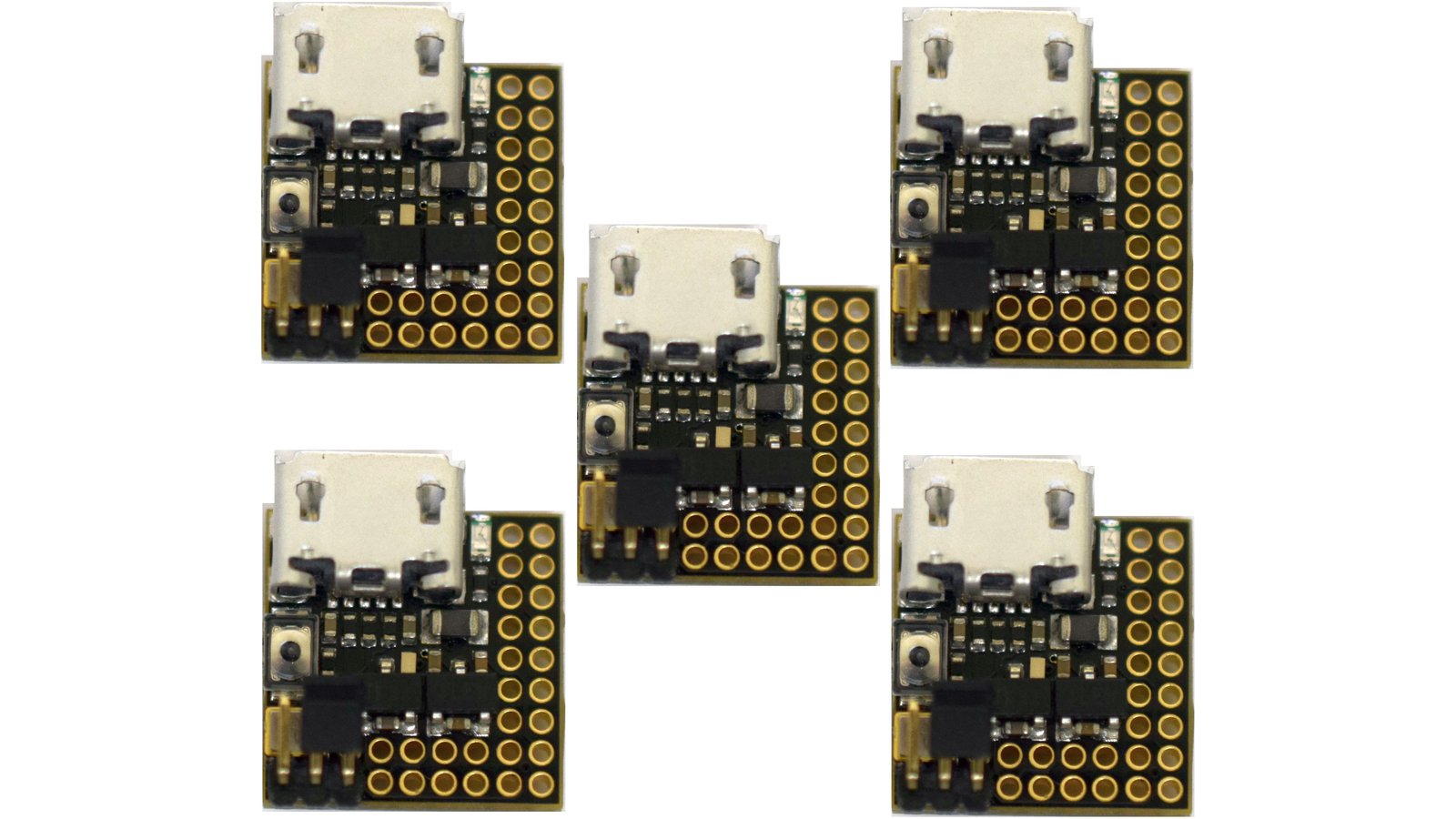
You will receive five µduinos for all your project needs!

You will receive two µduinos all built, programmed, and ready to go!
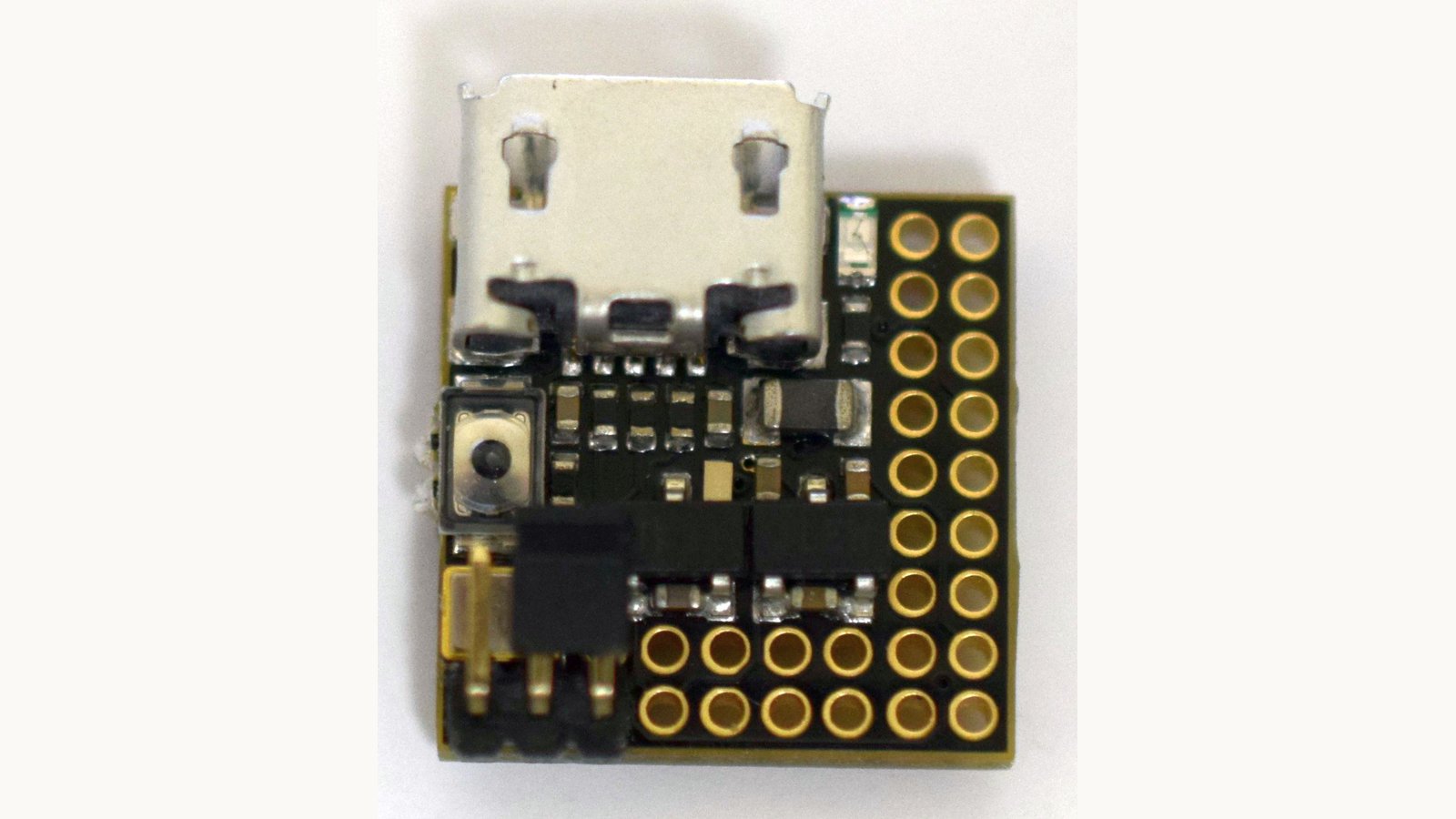
You will receive your µduino fully assembled and pre-programmed with the Arduino bootloader. Plug it into your USB cable and you're ready to go!
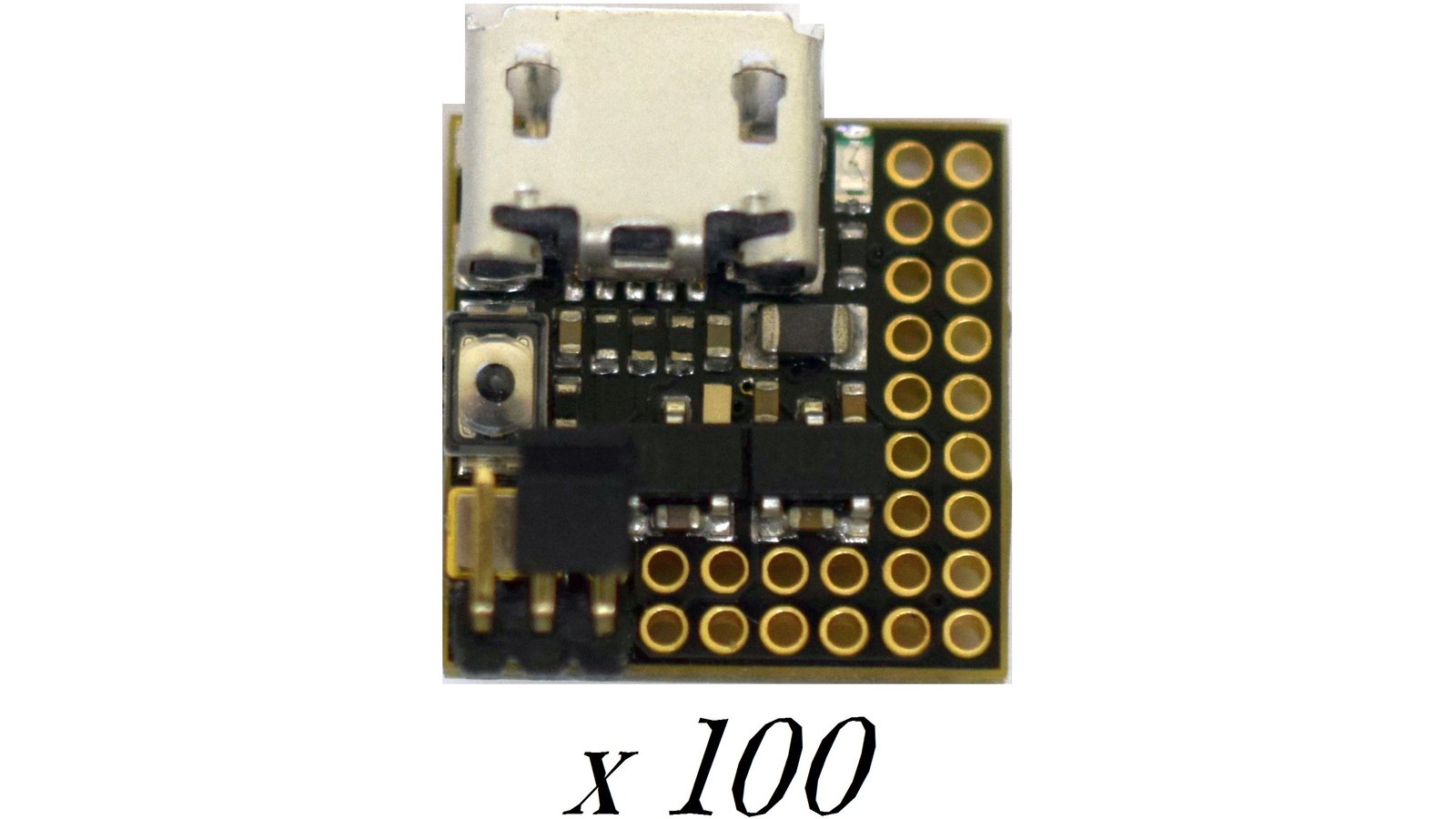
One hundred µduinos are yours for all your needs!

Special discounted µduinos due to USB port design error. See the update titled "Update on Production and Delivery" for more information!
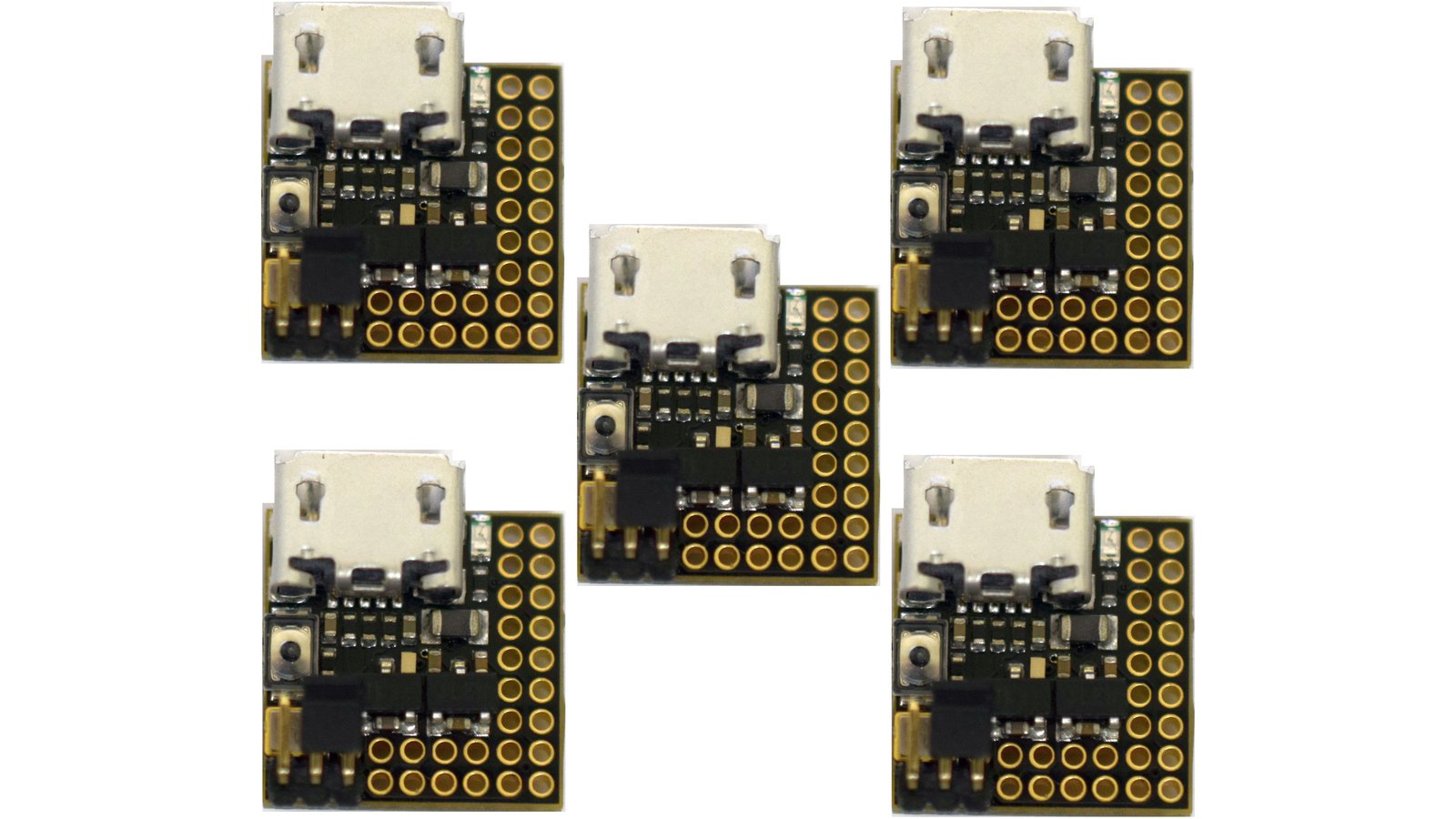
Special discounted µduinos due to USB port design error. See the update titled "Update on Production and Delivery" for more information!
